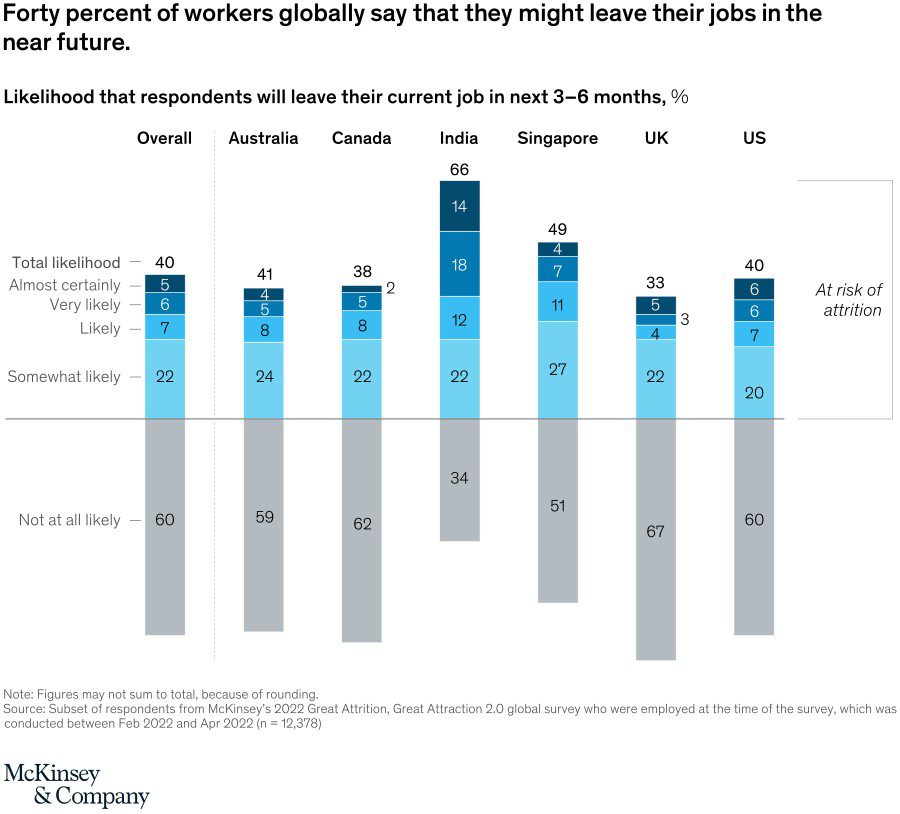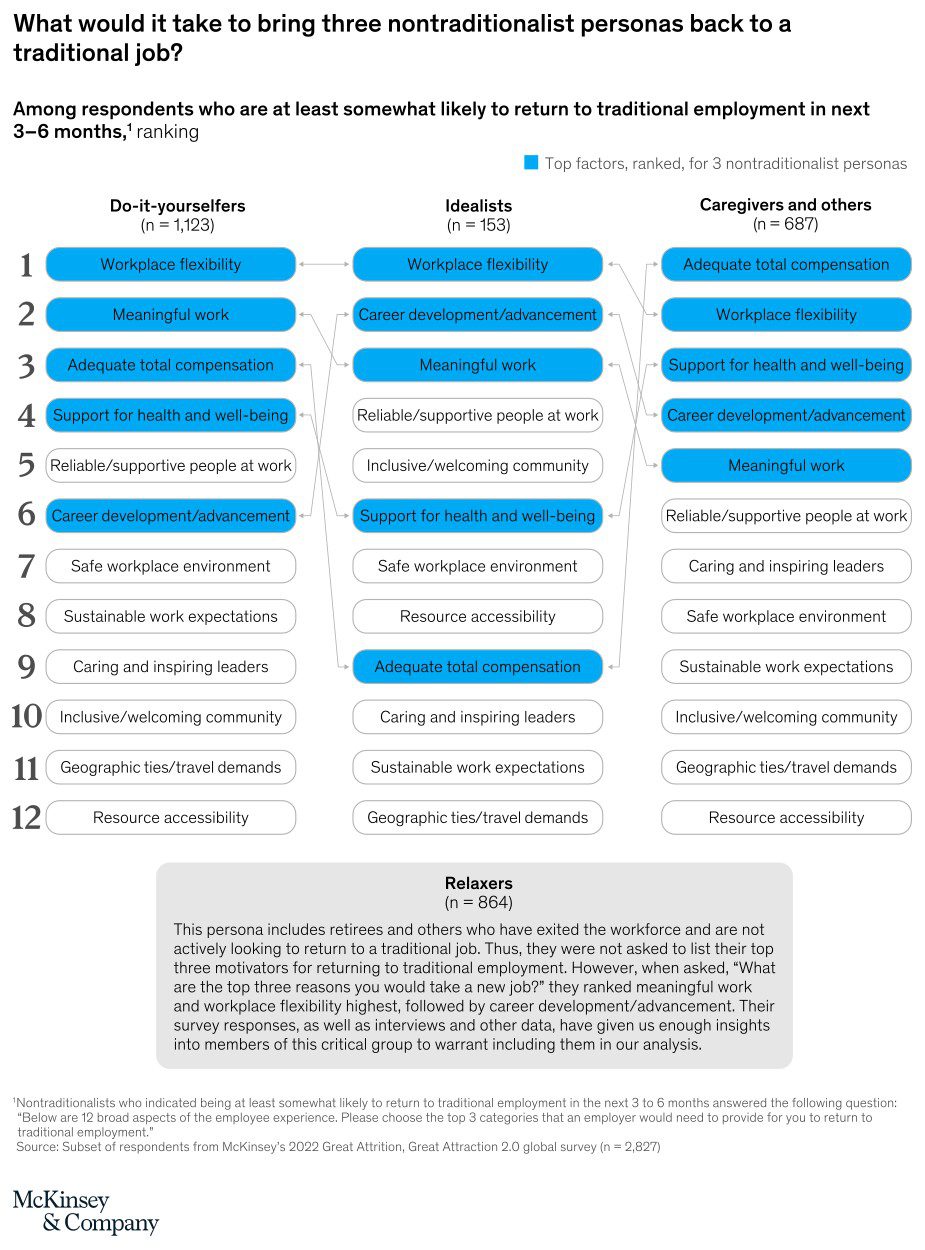McKinsey: The Great Attrition is making hiring harder. Are you searching the right talent pools?
McKinsey Quarterly, 13-July-2022
Authors: Aaron De Smet, Bonnie Dowling, Bryan Hancock, Bill Schaninger
People keep quitting at record levels, yet companies are still trying to attract and retain them the same old ways. New research identifies five types of workers that employers can reach to fill jobs.
It’s the quitting trend that just won’t quit. People are switching jobs and industries, moving from traditional to nontraditional roles, retiring early, or starting their own businesses. They are taking a time-out to tend to their personal lives or embarking on sabbaticals. The Great Attrition has become the Great Renegotiation.
- The Traditionalists: Career-oriented people who care about work–life balance but are willing to make trade-offs for the sake of their jobs. They are motivated to work full-time for large companies in return for a competitive compensation package and perks, a good job title, status at the company, and career advancement.
This group accounted for upto 60% of the working population, globally. - The Do-it-yourselfers: Anything for autonomy. This group wants flexibility above all else. This persona, comprising the largest share of respondents, values workplace flexibility, meaningful work, and compensation as the top motivators for potentially returning to the traditional workforce. They tend to be 25 to 45 years old and run the gamut from self-employed to full-time employed in nontraditional roles to gig and part-time workers, and accounted for 40% of the non-traditionalists.
-
The Caregivers: At home but wanting more. More than two years after the start of the pandemic, this persona needs little introduction. Members of this group are motivated by compensation but have another constellation of priorities for returning to their jobs: workplace flexibility, support for employee health and well-being, and career development. These are people who have decided to sit it out at home, with some actively looking for work and others who are passive job seekers hoping to find an opportunity that would justify reentering the paid labor force.
The predominant age group is between 18 and 44, with more women than men, many who are parents or other caregivers, and accounted for 24% of the non-traditionalist population. - The Idealists: Students and younger part-timers. Those in our idealist persona tend to be younger, aged 18 to 24, and many are students or part-time workers. Mostly unencumbered by dependents, mortgages, and other responsibilities, this group emphasizes flexibility, career development and advancement potential, meaningful work, and a community of reliable and supportive people, with compensation far lower on the list.
This group constituted only 5% of the non-traditionalist population. -
The Relaxers: Career doesn’t come first anymore. In contrast to the previous personas, the people in this cohort are a mix of retirees, those not looking for work, and those who might return to traditional work under the right circumstances. We call this latter group the “Gronks,” referring to the American football player Rob Gronkowski, who retired but returned at the urging of his former teammate Tom Brady and the promise of not only pay but also a flexible contract with a great team. Gronkowski recently retired again—but who knows what the future holds?Like many who retired early during the pandemic, Gronks have completed their traditional careers and might not need more money to live comfortably. So they will want more than the traditional value proposition to be enticed back into the workforce—including the promise of meaningful work.
Read the complete article from McKinsey, here.
Also, here’s a sneak peek at some of the most relevant findings from the article:




